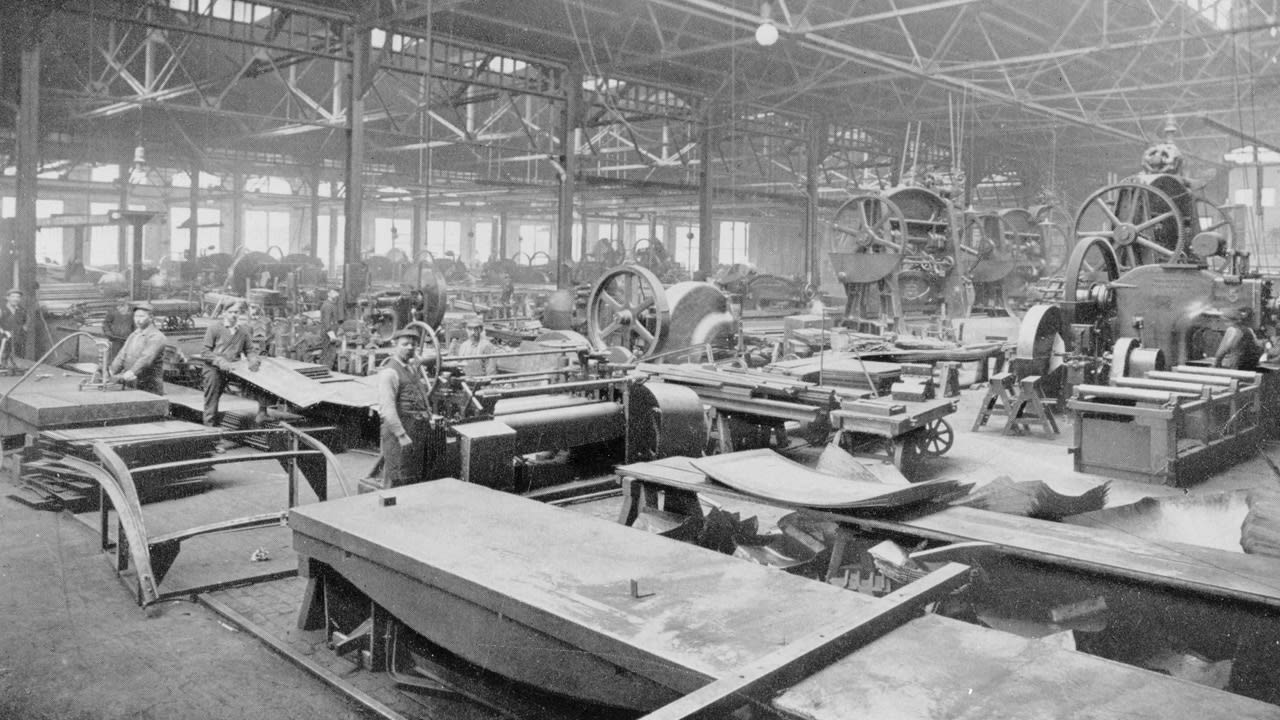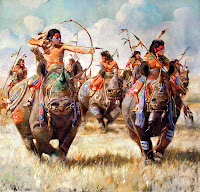MIL
Biyernes, Pebrero 16, 2018
Miyerkules, Enero 31, 2018
Miyerkules, Nobyembre 22, 2017
EDUCATIONAL TOUR 2K18
EDUCATIONAL TOUR 2K18
PUERTO PRINCESA PALAWAN




https://www.google.com.ph/search?q=PUERTO+PRINCESA+PALAWAN+PICS&tbm=isch&source=iu&ictx=1&fir=qPhhyyKgNQPfkM%253A%252C2G7PLa33w6B4FM%252C_&usg=__22MaV-9ajJMvMkhCCkvbGKKngFw%3D&sa=X&ved=0ahUKEwiDjLTPidHXAhUJVbwKHSYPAEUQ9QEINDAG#imgrc=qPhhyyKgNQPfkM:
LOCATION: PALAWAN
https://en.wikipedia.org/wiki/Palawan
DESTINATION: UGONG ROCk, Honda bay, underground river
https://www.google.com.ph/search?q=BEST+DESTINATION+IN+PALAWAN&oq=BEST+DESTINATION+IN+PALAWAN+&aqs=chrome..69i57.6698j0j1&sourceid=chrome&ie=UTF-8
aCTIVITIES:
EDUCATIONAL TOUR 2K18 PLAN B
NATIONAL MUSEUM


https://www.google.com.ph/search?q=national+museum&source=lnms&tbm=isch&sa=X&ved=0ahUKEwiH97bnyNPXAhXHvrwKHeXYAfYQ_AUICigB&biw=1024&bih=662#imgrc=IEZnoPGfaNffrM:
LOCATION: Padre Burgos Ave, Ermita, Manila, Metro Manila
https://www.google.com.ph/search?q=natl+museum+location&oq=natl+museum+location&aqs=chrome..69i57.12482j0j1&sourceid=chrome&ie=UTF-8
ACITIVTY:
BEST TIME TO VISIT: The National Museum is open tuesdays to sundays, from 10 am to 5pm
http://www.nationalmuseum.gov.ph/nationalmuseumbeta/Visit/Visit.html
TRANSPORTATION: They will pass through Lagusnilad underpass and go past Manila City Hall. Go down Finance Road (at the corner of the National Museum of the Philippines, across Philippine Normal University). Light Rail Transit (LRT) line 1: United Nations Avenue is the nearest station to the museum.
https://www.google.com.ph/search?q=transportation+to+national+museum&oq=transportation+to+national+museum+&aqs=chrome..69i57.17311j0j9&sourceid=chrome&ie=UTF-8
FOOD: Lunch food such as rice and dishes that are not easily spoiled. Don’t bring tomato based food. Stick to vinegar based. Yup that is the reason why Adobong Manok is very famous on field trip lunches. Adobo dishes are not easily spoiled. You have to be cautious though, never close your container when the food is still hot. It will cause the food to perspire and thus will lead to food spoilage.
http://www.pehpot.com/2010/12/what-to-bring-during-field-trips-educational-tourwhat-to-bring-during-field-trips-educational-tour.html
THINGS TO BRING:
PUERTO PRINCESA PALAWAN


https://www.google.com.ph/search?q=PUERTO+PRINCESA+PALAWAN+PICS&tbm=isch&source=iu&ictx=1&fir=qPhhyyKgNQPfkM%253A%252C2G7PLa33w6B4FM%252C_&usg=__22MaV-9ajJMvMkhCCkvbGKKngFw%3D&sa=X&ved=0ahUKEwiDjLTPidHXAhUJVbwKHSYPAEUQ9QEINDAG#imgrc=qPhhyyKgNQPfkM:
LOCATION: PALAWAN
https://en.wikipedia.org/wiki/Palawan
DESTINATION: UGONG ROCk, Honda bay, underground river
https://www.google.com.ph/search?q=BEST+DESTINATION+IN+PALAWAN&oq=BEST+DESTINATION+IN+PALAWAN+&aqs=chrome..69i57.6698j0j1&sourceid=chrome&ie=UTF-8
aCTIVITIES:
- ISLAND HOPPING

- Hike
and try the different adventures in Ugong Rock.
- AND OF COURSE VISIT THE MOST FAMOUS UNDERGROUND RIVER

https://www.buzzfeed.com/isabellelaureta/feelin-like-a-princesa?utm_term=.hgjYolM37#.bl4a35kWN
SCHEDULE: UNKNOWN
BEST TIME TO VISIT: OCTOBER TO MAY
The best time to visit this lush, tropical, pristine island of Palawan is from October to May when the temperatures are most moderate allowing for an ideal climate of fun and sun. The temperature averages around 30 degrees centigrade and rain during this period is rare. The off-peak season, according to local tour guides, is from September to November.
http://www.philippinetraveltours.com/destinations/palawan_philippines_travel.php
LENGTH OF VACATION: 1 WEEK
TRANSPORTATION: Puerto Princesa is a major tourist destination in the Philippines. Thus, all major airlines — Cebu Pacific, PAL Express, Seair/Tiger Airways, and Zest Air — have direct flights here from Manila. Here are the airlines that fly to Puerto Princesa and from where:
- Cebu Pacific Air – Manila, Cebu, Davao, and Iloilo
- PAL Express – Manila, Cebu, Clark, and Busuanga
- Seair/Tiger Airways Philippines – Manila
- Zest Airways – Manila, Cebu\
- https://www.thepoortraveler.net/2011/04/puerto-princesa-trip-summary-expenses-2/
ACOMMODATION:
https://www.tripadvisor.com/HotelsList-Puerto_Princesa-Cheap-Hotels-zfp110596.html
FOODS: Super Cream Halo Halo

Crocodile Sisig

Dangit Lamayo

Honey Nougat

http://www.wheninmanila.com/10-must-try-dishes-and-delicacies-in-puerto-princesa-palawan/
WHAT TO BRING:
FOODS: Super Cream Halo Halo
Crocodile Sisig
Dangit Lamayo
Honey Nougat
http://www.wheninmanila.com/10-must-try-dishes-and-delicacies-in-puerto-princesa-palawan/
WHAT TO BRING:
Clothing and Accessories
- Comfortable walking shoes and one pair of nicer shoes
- Shirts (short and long sleeved)
- Socks and underwear
- Watch
- Pants/shorts/jeans
- Pajamas
- Bathing suit (if applicable)
- Dressier outfit (reserved for a special night out)
- Raincoat and/or umbrella
- Lightweight nylon jacket or fleece (rather than bulky sweatshirts)
Toiletries
- Toothbrush
- Toothpaste
- Shampoo/conditioner
- Soap
- Deodorant
- Hairbrush/comb
- Sunscreen
- Hand sanitizer
- Any medications (in addition to a copy of any prescription)
- Spare set of contact lenses/glasses (if applicable)
Money
- ATM card (Call your bank prior to departure to alert them of the trip; foreign purchases sometimes result in a hold on bank accounts.)
- Personal credit card
- Pouch for storing money and passport under clothing
Electronics
- An alarm clock (Many hotel rooms won't have one.)
- An adaptor/converter
- Camera with extra batteries or charger
Documents
- Visas (if applicable)
- A copy of the tour itinerary
- A list of important phone numbers
- Addresses to send postcards home
- Copy of any prescriptions (Customs officials may want to verify that a container's contents match its label, so all medication should be carried in its original container.)
Carry-on bag
The EF backpack that every traveler receives is a perfect carry-on bag. Here’s a short list of things travelers might need on the first day of the trip. These should be packed in your carry-on in case your checked luggage is delayed:
- Money
- Airline boarding pass
- Toothbrush and toothpaste (Check tsa.gov for current security requirements.)
- Hairbrush
- Contact lens case/glasses (to sleep comfortably on the plane)
- A change of clothes (in case luggage is delayed)
- Medication
- Any valuables
https://www.eftours.com/help-center/preparation/what-to-pack
TOTAL BUDGET: FOR 5 DAYS FOR ONLY PHP 6,730.66 ALL-IN [EXPENSES]
http://www.travelswithahobo.com/how-we-traveled-to-el-nido-palawan-for-5-days-for-only-php-6730-66-all-in-expenses/
http://www.travelswithahobo.com/how-we-traveled-to-el-nido-palawan-for-5-days-for-only-php-6730-66-all-in-expenses/
EDUCATIONAL TOUR 2K18 PLAN B
NATIONAL MUSEUM
https://www.google.com.ph/search?q=national+museum&source=lnms&tbm=isch&sa=X&ved=0ahUKEwiH97bnyNPXAhXHvrwKHeXYAfYQ_AUICigB&biw=1024&bih=662#imgrc=IEZnoPGfaNffrM:
LOCATION: Padre Burgos Ave, Ermita, Manila, Metro Manila
https://www.google.com.ph/search?q=natl+museum+location&oq=natl+museum+location&aqs=chrome..69i57.12482j0j1&sourceid=chrome&ie=UTF-8
ACITIVTY:
- See the famous Manunggul Jar which was made before christ was born
- Roam around the session hall of the Philippines
- and many more!!!!!!
http://faq.ph/photos-national-museum-of-the-philippines/
http://www.nationalmuseum.gov.ph/nationalmuseumbeta/Visit/Visit.html
TRANSPORTATION: They will pass through Lagusnilad underpass and go past Manila City Hall. Go down Finance Road (at the corner of the National Museum of the Philippines, across Philippine Normal University). Light Rail Transit (LRT) line 1: United Nations Avenue is the nearest station to the museum.
https://www.google.com.ph/search?q=transportation+to+national+museum&oq=transportation+to+national+museum+&aqs=chrome..69i57.17311j0j9&sourceid=chrome&ie=UTF-8
FOOD: Lunch food such as rice and dishes that are not easily spoiled. Don’t bring tomato based food. Stick to vinegar based. Yup that is the reason why Adobong Manok is very famous on field trip lunches. Adobo dishes are not easily spoiled. You have to be cautious though, never close your container when the food is still hot. It will cause the food to perspire and thus will lead to food spoilage.
http://www.pehpot.com/2010/12/what-to-bring-during-field-trips-educational-tourwhat-to-bring-during-field-trips-educational-tour.html
THINGS TO BRING:
Clothing and Accessories
- Comfortable walking shoes and one pair of nicer shoes
- Shirts (short and long sleeved)
- Watch
- Pants/shorts/jeans
- Raincoat and/or umbrella
Money
- Pouch for storing money
Electronics
- Camera with extra batteries or charger
Carry-on bag
- Money
- Any valuables
TOTAL BUDGET: 500 pesos (Own Estimation)
Miyerkules, Nobyembre 8, 2017
New Age
New Age
The Information Age (also known as the Computer
Age, Digital Age, or New Media Age) is a period in human history characterized
by the shift from traditional industry that the Industrial Revolution brought
through industrialization, to an economy based on information computerization.
The onset of the Information Age is associated with the Digital Revolution,
just as the Industrial Revolution marked the onset of the Industrial Age.[1][2]
The definition of what digital means (or what information means) continues to
change over time as new technologies, user devices, methods of interaction with
other humans and devices enter the domain of research, development and market
launch.
During the Information Age, the phenomenon is that
the digital industry creates a knowledge-based society surrounded by a
high-tech global economy that spans over its influence on how the manufacturing
throughout and the service sector operate in an efficient and convenient way.
In a commercialized society, the information industry is able to allow
individuals to explore their personalized needs, therefore simplifying the
procedure of making decisions for transactions and significantly lowering costs
for both the producers and buyers. This is accepted overwhelmingly by
participants throughout the entire economic activities for efficacy purposes,
and new economic incentives would then be indigenously encouraged, such as the
knowledge economy.[3]
The Information Age formed by capitalizing on
computer microminiaturization advances.[4] This evolution of technology in
daily life and social organization has led to the fact that the modernization
of information and communication processes has become the driving force of
social evolution.
Electronic Age
Electronic Age
In The Electronic Age – The Age of Implosion,
McLuhan discusses the idea that the explosion of the electronic age has
actually created an implosion of our models of perception. This is to say that
we are now ever-more aware of individuals at much greater distances than we
once were. “All men are now involved in one another physically and psychically
as happens when they occupy a very small village. And as global villagers, all
men must now accommodate their judgments to the complex interdependence understood
and manipulated by villagers”
As I’ve noted previously (again an epiphany
far from original to me), McLuhan’s insight is far more relevant today than it
was at the time he wrote this essay (1962). In the 1960s, one could read
newspapers, hear radio broadcasts, or watch television footage of events and
individuals in other parts of the world or even interact with individuals over
the telephone. However, this pales in comparison to the direct, egalitarian,
interactive features that the internet offers us. One can create his or other
own website, video blog, etc. for the masses, or have one-to-one video
conversations, either in real time or asynchronously, with individuals around
the world. Therefore, to the extent that I can be aware of, interact with, and
accommodate my judgments and perceptions of people around the world, we are
currently more “global villagers” than ever before.
This is to say that we can communicate with online
individuals at any distance without even leaving our homes. We form various
communities that assist us in socializing, working through personal or
professional issues, discussing our religious and spiritual beliefs, etc. While
this may not have the FtF synchronicity and serendipity of a literal village
(performing tasks and walking together, etc.), many conversational tangents
occur. When such communication is conducted through the OVC, one can both see
and hear the individual(s) with whom he or she is speaking. The essence of my
research is to determine the extent to which this situation presents a level of
social presence (awareness of the conversation participants) higher than other
distance communication methods and how it is perceived in ratio to FtF
communication.
Industrial Age
Industrial Age

The Industrial Age is a period of history that encompasses the changes in economic and social organization that began around 1760 in Great Britain and later in other countries, characterized chiefly by the replacement of hand tools with power-driven machines such as the power loom and the steam engine, and by the concentration of industry in large establishments.[1][2]
While it is commonly believed that the Industrial Age was supplanted by the Information Age in the late 20th century,[3] a view that has become common since the Revolutions of 1989, as of 2013 electric power generation is still based mostly on fossil fuels and much of the Third World economy is still based on manufacturing. Thus it is debatable whether we have left the Industrial Age already or are still in it and in the process of reaching the Information Age
Pre Historic Age
Prehistoric Age

is the period of human activity between the use of the first stone tools c. 3.3 million years ago and the invention of writing systems, the earliest of which appeared c. 5,300 years ago.
Sumer in Mesopotamia, the Indus valley civilisation and ancient Egypt were the first civilisations to develop their own scripts, and to keep historical records; this took place already during the early Bronze Age. Neighbouring civilizations were the first to follow. Most other civilizations reached the end of prehistory during the Iron Age. The three-age system of division of prehistory into the Stone Age, followed by the Bronze Age and Iron Age, remains in use for much of Eurasia and North Africa, but is not generally used in those parts of the world where the working of hard metals arrived abruptly with contact with Eurasian cultures, such as the Americas, Oceania, Australasia and much of Sub-Saharan Africa. These areas also, with some exceptions in Pre-Columbian civilizations in the Americas, did not develop complex writing systems before the arrival of Eurasians, and their prehistory reaches into relatively recent periods.
The period when a culture is written about by others, but has not developed its own writing is often known as the protohistory of the culture. By definition,[1] there are no written records from human prehistory, so dating of prehistoric materials is crucial. Clear techniques for dating were not well-developed until the 19th century.
Mag-subscribe sa:
Mga Komento (Atom)











